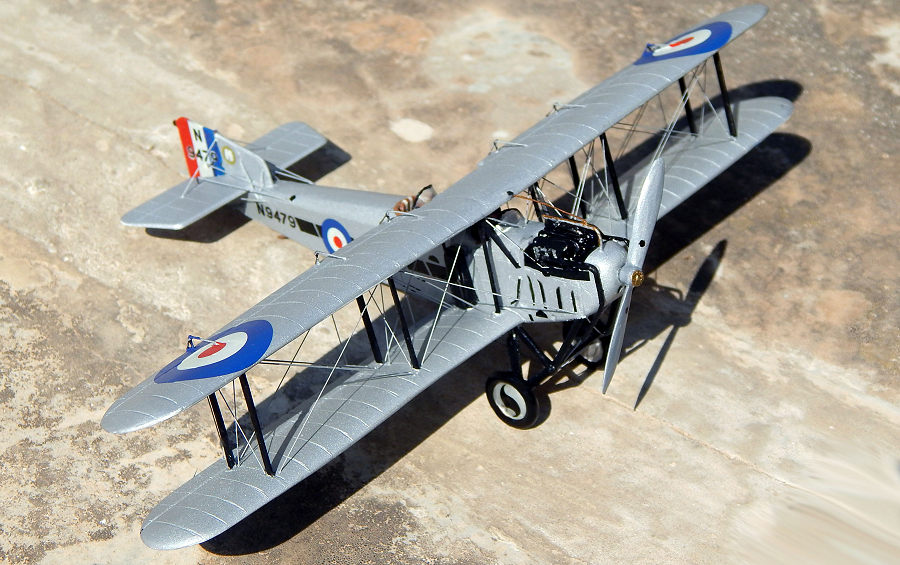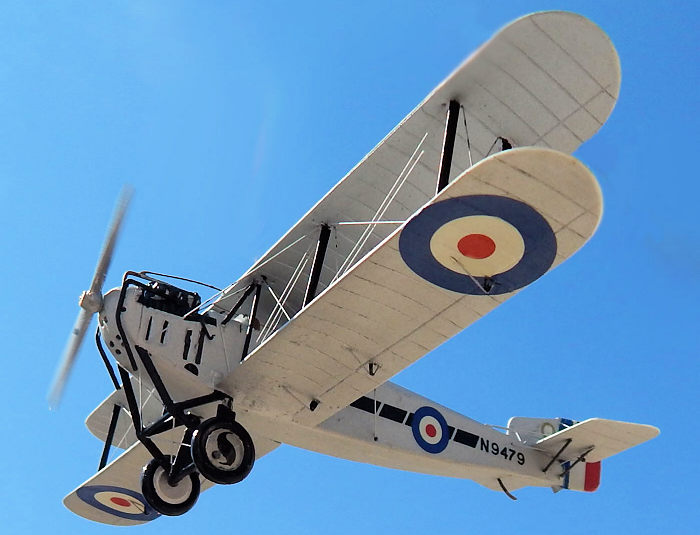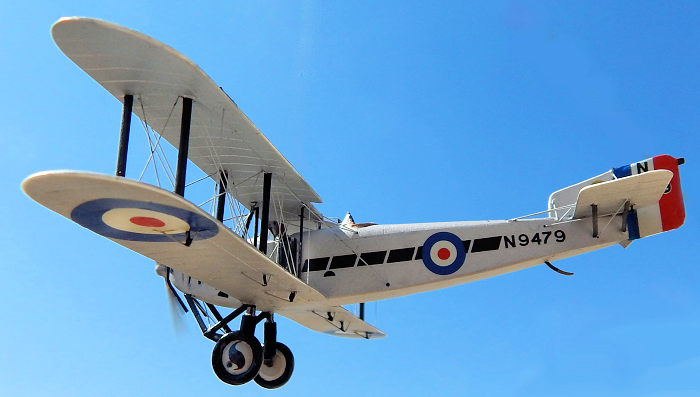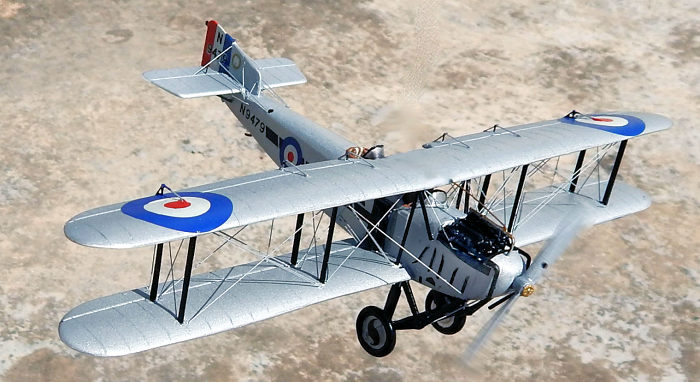
| KIT #: | NAF 28 |
| PRICE: | £10.00 |
| DECALS: | Five options |
| REVIEWER: | Carmel J. Attard |
| NOTES: | Vac form kit with metal parts and options for a floatplane |

| HISTORY |
 The blunt nosed Fairey IIID was one of the early post
WWI aircraft and the predecessor of the more widely known Fairey IIIF. In
service with British naval aviation it could serve on both floats and wheels in
the 1920’s era and so it operated from shore bases like Portsmouth and Hal Far
stations and also aircraft carriers of the time.
The blunt nosed Fairey IIID was one of the early post
WWI aircraft and the predecessor of the more widely known Fairey IIIF. In
service with British naval aviation it could serve on both floats and wheels in
the 1920’s era and so it operated from shore bases like Portsmouth and Hal Far
stations and also aircraft carriers of the time.
The Fairey IIID was described as ‘Fairey’s most successful aircraft’ and was a development from the IIIB and IIIC models of the 1914-18 war, which assembled into a well-constructed and durable package, which ultimately ensured its success.
Serving with both the RAF and FAA from end of war until replaced by more modern types, for more than 10 years. The reputation of this durable type was such that it was ordered by Australia, Sweden, Holland and Portugal, the latter using the IIID for a transatlantic flight attempt in 1922. One example survives today in the Naval museum in Lisbon.
| THE KIT |
 Kit comes packed in a sturdy cardboard Esoteric box in
the series Naval Aviation Factory NAF 28 and is complete with vacform parts,
metal parts, decals and comprehensive instructions.
Kit comes packed in a sturdy cardboard Esoteric box in
the series Naval Aviation Factory NAF 28 and is complete with vacform parts,
metal parts, decals and comprehensive instructions.
The vacform parts are clearly moulded on a single sheet of white plastic card. Other components in white metal include engine block, two radiators, propeller, wheels and the main under carriage legs. Three different widths of airfoil-section strutting strips are also included.
There are five decal options two of which are floatplanes and the rest are either carrier or land based with undercarriage gear. My choice fell on one of the three land based versions. This is the Fairey IIID N9479of Fleet Reconnaissance Flight, Hal Far, Malta 1930. This was a dual control trainer version and carried code ‘M’ on a gold disc on the fin denoting Malta station. I could also have made the IIID Mk II S1019 of 440 Flight 1925/26 HMS Eagle that also visited Hal Far.
| CONSTRUCTION |
Fuselage interior is for three crew members, normally for reconnaissance version consisting of floor pan, two seats, three bulkheads most of which you have to locate position, as there is no good indication or hint of their correct position. The IIID I opted for was in fact a dual trainer type that was based in Malta circa 1930. To build this version the integrally moulded tail float had to be surgically sawn off and replaced with a blanking piece in place.
 Having cut the fuselage, built the interiors with the
back seat this time also facing forwards (since no gun position is mounted), and
finally put on the parts together, the next stage was to prepare main planes and
other flying surfaces. The moulding of these resulted in very thin styrene and
for this reason I added another bottom wing frame for both the top and lower
wing using in each case a thin section of plastic card, allowed to set and cut
to conform each wing profile. This also allowed me to scratch surface detail
lines on both sides of each wing. Two sided mouldings were also repeated for fin
and rudders and tail planes.
Having cut the fuselage, built the interiors with the
back seat this time also facing forwards (since no gun position is mounted), and
finally put on the parts together, the next stage was to prepare main planes and
other flying surfaces. The moulding of these resulted in very thin styrene and
for this reason I added another bottom wing frame for both the top and lower
wing using in each case a thin section of plastic card, allowed to set and cut
to conform each wing profile. This also allowed me to scratch surface detail
lines on both sides of each wing. Two sided mouldings were also repeated for fin
and rudders and tail planes.
Allowing a little dihedral I fixed the two lower wings adding a metal pin that crossed the fuselage and into each wing section giving a good alignment of the lower wing parts.. I did not use struts supplied but instead made four pairs of metal struts that were flattened in a vice trapping a thin pin at the ends. Accurately marked holes positions for these struts were then drilled on lower wings. Equal place were marked on under sides of upper wings. Struts were then super glued in place and the upper wing lowered on them. This resulted in a strong strut assembly that could withstand handling of drilling for double rigging to wings. Shorter struts were added to inner of wings and tail planes using the strutting material from kit.
 The main undercarriage legs and axle are a one-piece
metal component. This was trimmed from excess fins and each fixed to fuselage
joint behind the leading edge of lower wing. The remaining supporting leg
structure was fitted into place behind cowling. Engine block with additional
manifold were made from a narrow hollow pipes, and the radiator and tailskid
were also super glued in place. To each side of forward fuselage a safe starting
handle was added. This was made from a bent piece of metal wire.
The main undercarriage legs and axle are a one-piece
metal component. This was trimmed from excess fins and each fixed to fuselage
joint behind the leading edge of lower wing. The remaining supporting leg
structure was fitted into place behind cowling. Engine block with additional
manifold were made from a narrow hollow pipes, and the radiator and tailskid
were also super glued in place. To each side of forward fuselage a safe starting
handle was added. This was made from a bent piece of metal wire.
For rigging I used thin fishing line. This could be applied at any stage once the wings were strong enough, secured on their struts. Painting was straight forward using mainly Humbrol black for radiators and block with touches of silver and bronze. The rest of the model was sprayed in Humbrol bright silver No 11 though not as shiny as I expected. A coat of Future gave a brighter overall appearance. All strutting was black as suggested by the instructions. Decals in spite of age retained their good quality nature and adhered well. The only comment is that the tail decal of red white and blue striping was considerably oversize. I measured and trimmed each one before applying them.
Fairey IIID N9479 was one of a small batch dual trainers which had instruments to the rear seat added. The scarf ring and Lewis gun for rear cockpit were left out.
| CONCLUSIONS |
I am grateful to Jim Wood of Esoteric for the opportunity to add this kit to the NAF range of models as in doing so I was able to ad another type that was once a common sight in our skies over Hal Far and surroundings.
August 2019
Copyright ModelingMadness.com. If you would like your product reviewed fairly and fairly quickly, please
contact
the editor or see other details in the
Note to
Contributors. Back to the Main Page
Back to the Review
Index Page
Back to the Previews Index Page